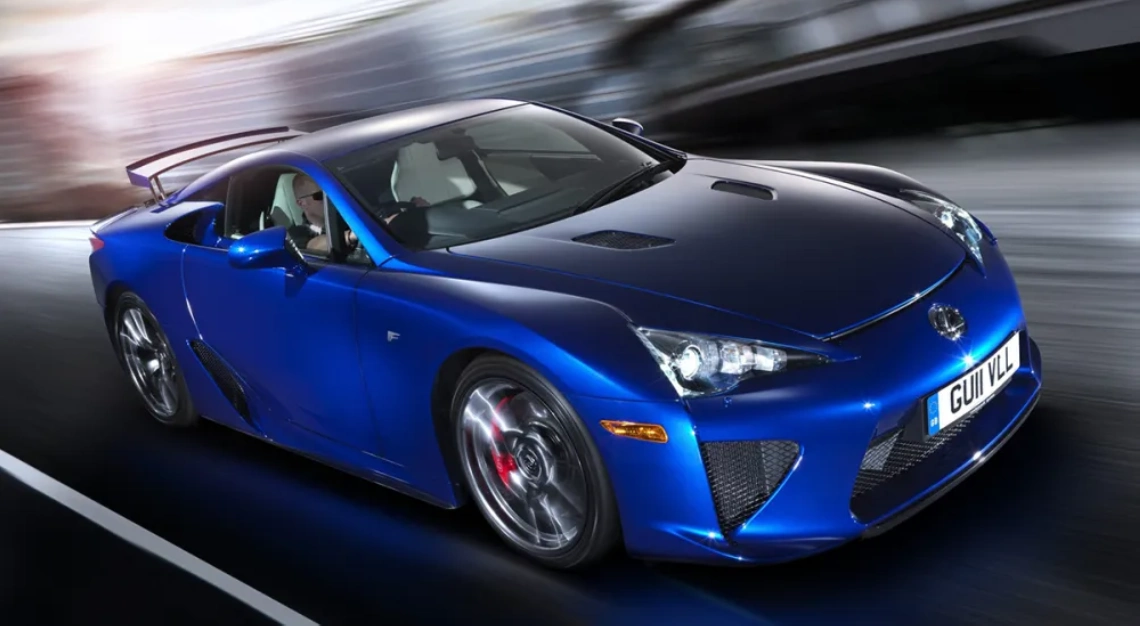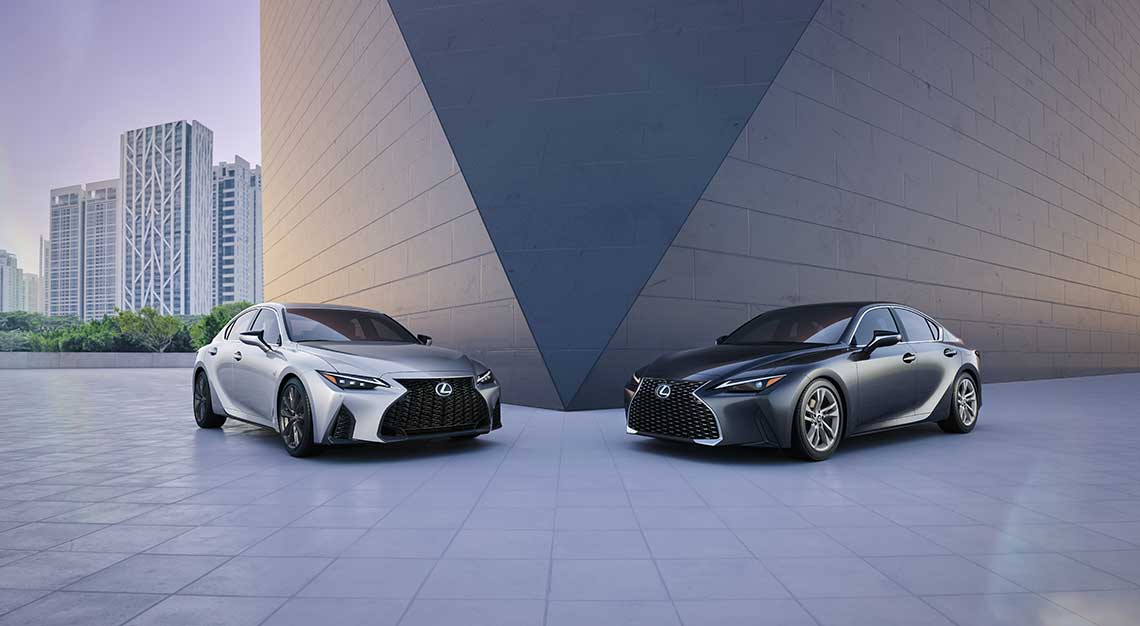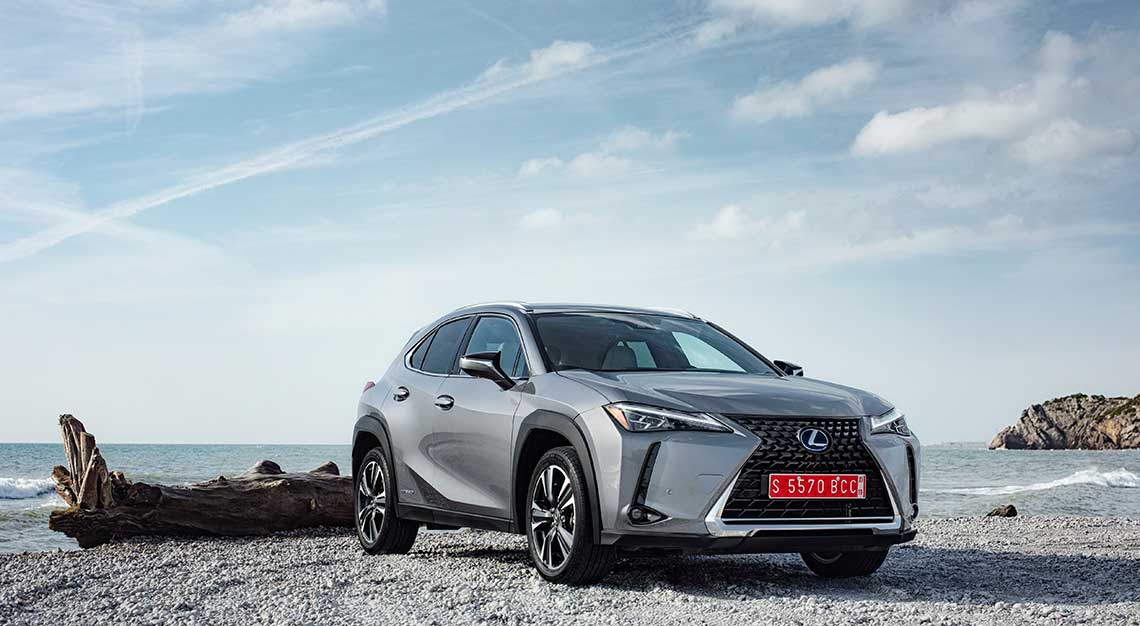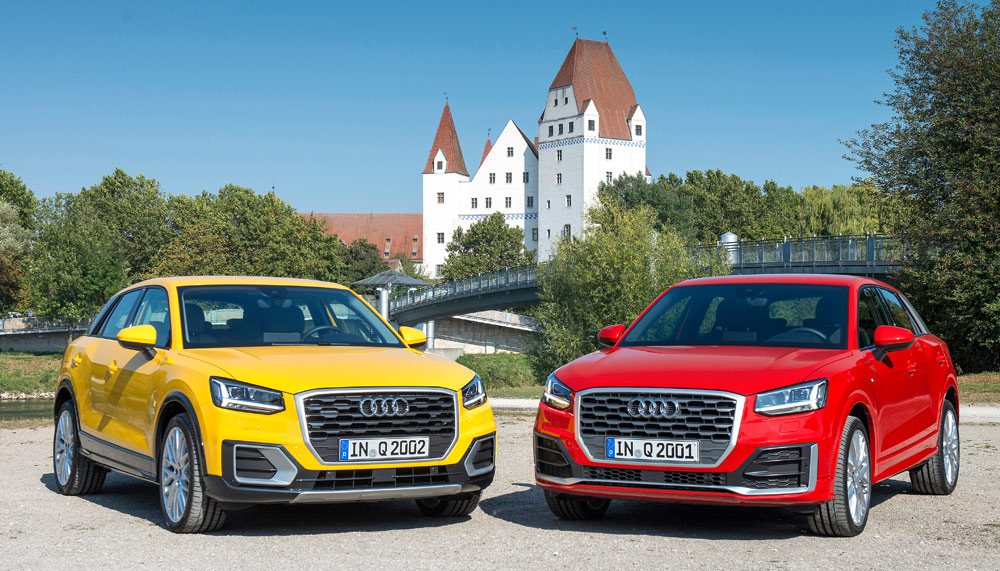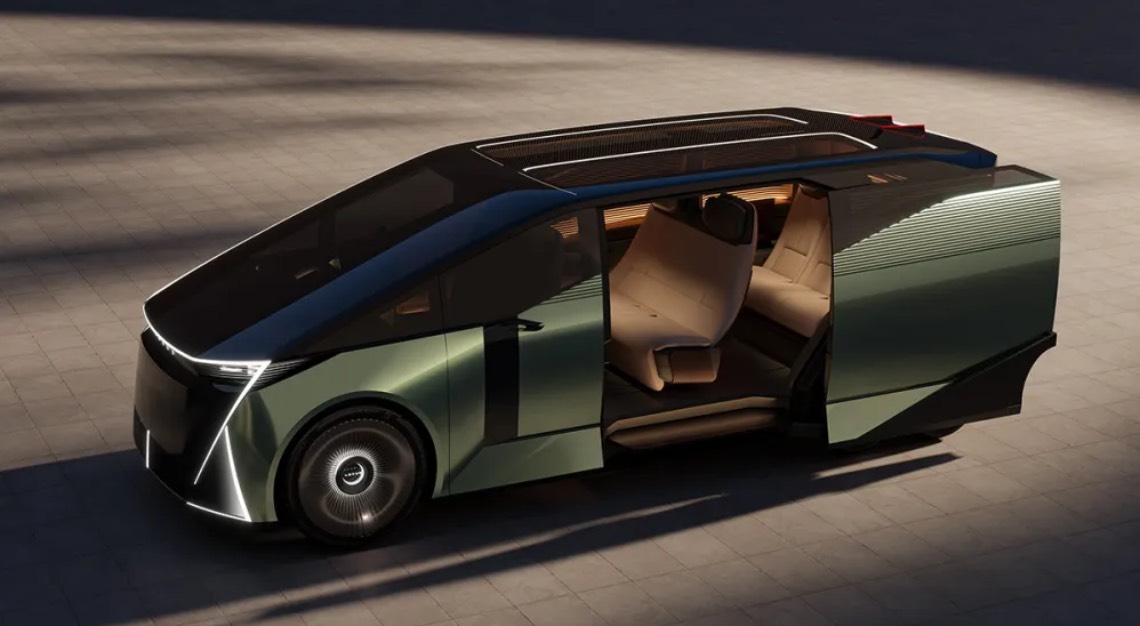The last Lexus LFA rolled off the line in 2012, but it has only gained stature among serious collectors in the decade since. Here’s everything to know about the coveted model
Overview
There are few better examples of not knowing what you have until it’s gone in recent automotive history than the Lexus LFA.
There aren’t many vehicles out there like the racing-derived supercar, even more than a decade after it went out of production. That’s not just due to Lexus only building 500 examples during the two years the model was in production (2010 to 2012) but also because it is a singular model in the Japanese luxury marque’s 35-year history. There was nothing like it before it rolled off the line, and there’s been nothing like it since.

These two reasons help explain why collectors go a little crazy on the infrequent occasion that an LFA manages to hit the open market, be it through an auction or a private sale. Just look what happened when an Ohio-based dealer listed a barely driven LFA that once belonged to hotel heiress, reality TV icon, and DJ Paris Hilton in 2020. The asking price: US$448,900, or 20 per cent more than the vehicle cost brand new. The thing is, that was actually a bargain—other examples have sold for significantly more in the years since.
Whether it’s the model’s rarity, its naturally aspirated V-10, or those elegant, understated lines, the LFA remains an object of increasing fascination for both collectors and enthusiasts. Below is everything we know about one of the most intriguing supercars of the 21st century.
Engine, specs and performance
The LFA was first dreamt up by Akio Toyoda, the CEO of Lexus’s parent company, Toyota, during the early aughts. The exec desperately wanted to build a car that would rival the best sports cars coming out of Italy and Germany and put an onus on two things: performance and drivability. Three prototypes were unveiled during the near-decade that the car was in development—the LFA was part of the Lexus Future (LF) line of concepts, with the A in its name standing for “Apex”—but by the time it was ready for production, Akio’s vision had been realised.
The coupé is powered by a front-mid-mounted, naturally aspirated 4.8-litre DOHC V-10 called the 1LR-GUE. The bespoke engine was created in collaboration with Yamaha, the same company Toyota is currently trying to develop a hydrogen powertrain with. Despite having ten cylinders, its compact size and the use of aluminium, magnesium, and titanium alloys mean it takes up as much space as a V-8 and weighs as much as a V-6. The mill can produce up to 553 hp at 8,700 rpm and 480 Nm of torque at 6,800 rpm, which is routed to the back wheels via a rear-mounted Aisin six-speed automatic manual gearbox. Redline is at 9,000 rpm, which the engine can reach in just a half second. Because of this, the car had to be equipped with a digital tachometer to display engine speed, since an analog version couldn’t keep up.
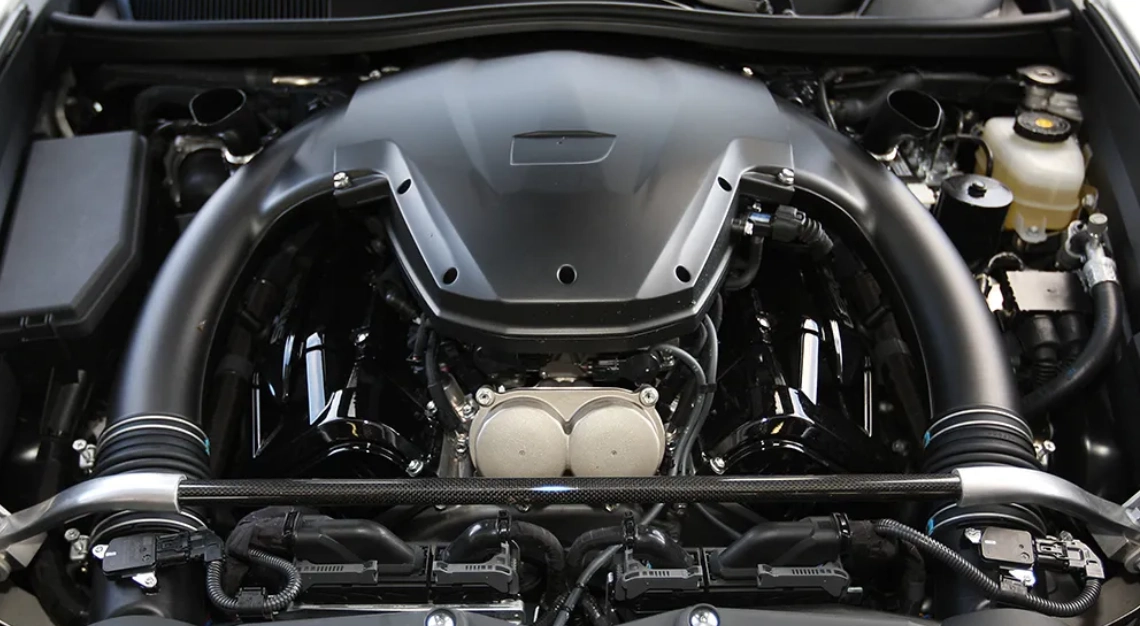
Thanks to all that power, the LFA can zip from zero-to-hundred in 3.6 seconds, hit 400 metres in 11.5 seconds, and has a top speed of 326 km/h. Traveling at that kind of speed is a thrill, a sensation only heightened by the sound of the LFA’s racing-inspired mill. As one Toyota engineer reportedly put it, the supercar’s engine emits the “roar of an angel.”
On the off chance that all this isn’t impressive enough, there’s also the track-focused Nürburgring Package variant. In addition to 10 extra horsepower, this model was equipped with a similar setup to the LFA race car, including a faster-shifting transmission, more adjustable suspension, and loads more carbon fibre, which helped reduce weight by over 68 kilograms. Acceleration and top speed are almost identical, but the Nürburgring Package was so much better on the track, circling its namesake circuit 23 seconds faster than the standard model. Oh, and it was still street-legal.
A carbon fibre exterior
From the outset, the LFA was designed to be a high-performance beast. Sports and supercars need to look cool, of course, but Kengo Matsumoto and the rest of the team at Lexus Design were more focused on function than style. If an element essential to the vehicle’s aesthetic had to be sacrificed to improve aerodynamic performance, then so be it. It’s because of this that the LFA is one of the more understated supercars of the last decade.
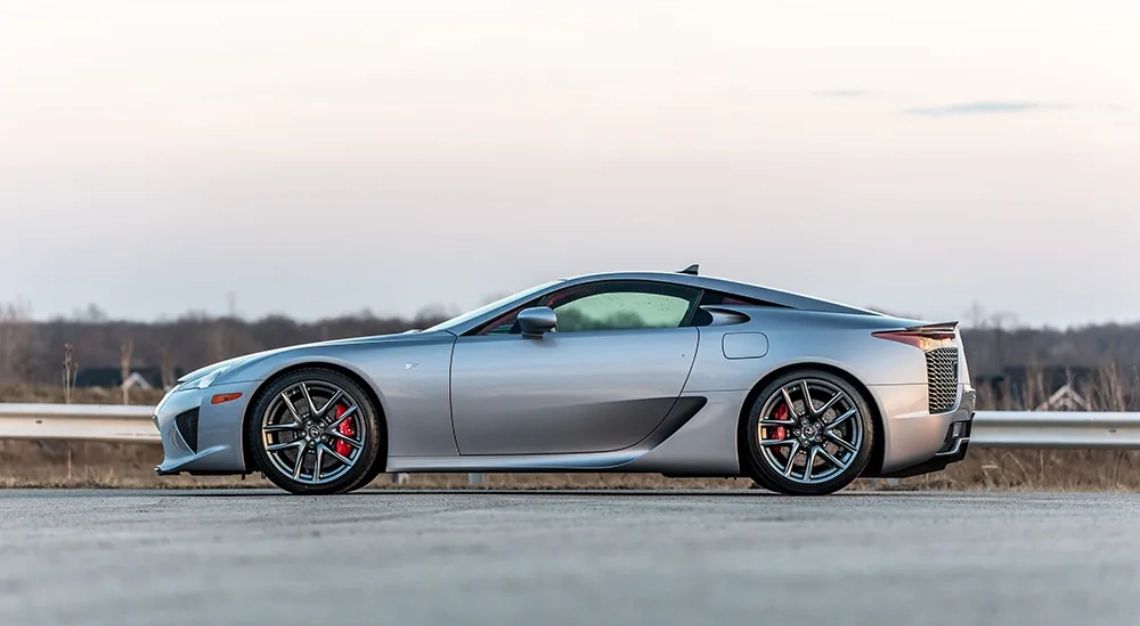
The LFA is a sleek coupe that rides low to the ground. The carbon-fibre exterior has a long nose, tall haunch, and sharp edges, all of which combine to create as much downforce as possible. There are also a variety of scoops and vents, most notably just behind the side windows and above the rear fenders designed to help cool the engine and brakes. The cherry on top, though, is the speed-sensitive rear wing that rises when you eclipse 80 km/h. All of these elements combine to give the car a decidedly athletic look, especially compared to other Lexus models. The marque also offered up plenty of colour options to help buyers make their LFA their own. Customers could choose from 28 body colours, along with three wheel colours. Special order hues were also available.
The LFA’s body is no less impressive. Even by supercar standards, it is lightweight—tipping the scales at a relatively paltry 1614 kilograms. Lexus found ways to minimise heft throughout the vehicle’s construction, but this is especially true of its body. It’s not unusual to see a car outfitted with elements designed to reduce curb weight, but the LFA’s body leaned heavily into carbon fibre-reinforced polymer. In fact, 65 per cent of the car’s body is made from the feather-light material.
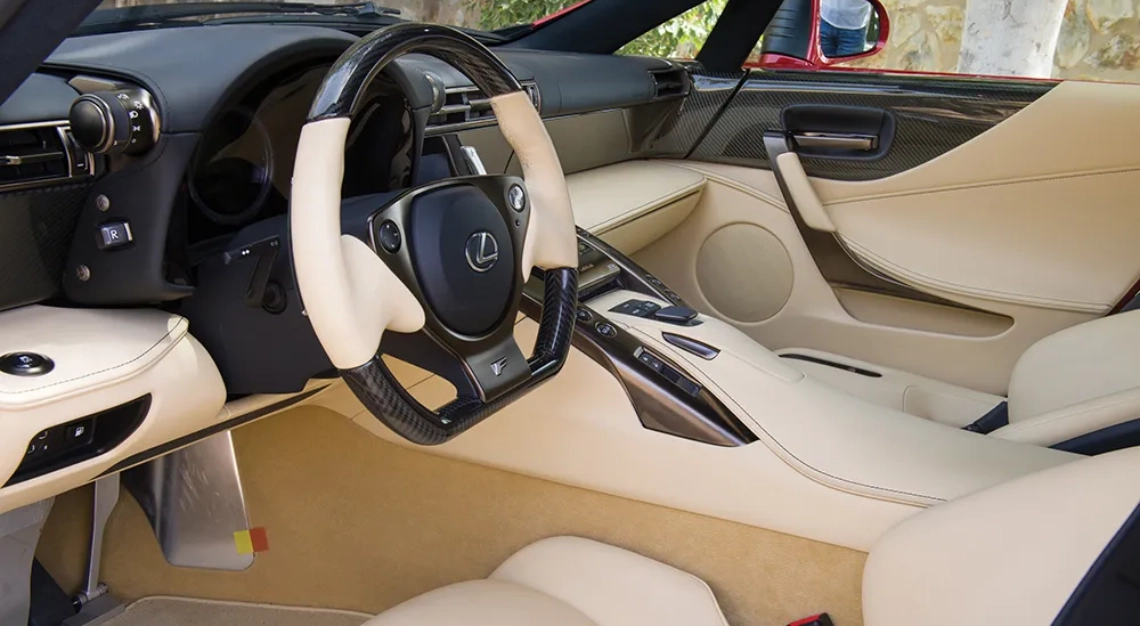
A bespoke interior
Performance isn’t necessarily the first thing people think of when the name Lexus comes to mind. Luxury is, though. And sure enough, the LFA offers the kind of plush interior for which the marque has come to be known.
The cabin features a two-tone colourway, and everything, including the two bucket seats, is covered in luxe materials such as fine leather and Alcantara, which are tastefully accented with carbon fibre and metal. The driver’s cockpit features a digital TFT display that changes colour to warn you if you’re approaching the redline. The steering wheel includes alloy paddle shifters and a right-mounted ignition button (you’ll still have to insert the key, though). The LFA predates the infotainment system trend of the last few years, but it does have a rear-view camera and a 12-speaker Mark Levinson sound system. In an interesting twist, it originally came with a set of custom-made Tumi suitcases that matched the cabin’s colour scheme.
The LFA’s interior has a sporty feel that makes it clear you are sitting in a high-performance vehicle. Adding to this dynamic is the fact that Lexus channeled two octaves of engine noise into the cabin. You won’t just feel the engine’s roar when you accelerate, you’ll hear it loud and clear.
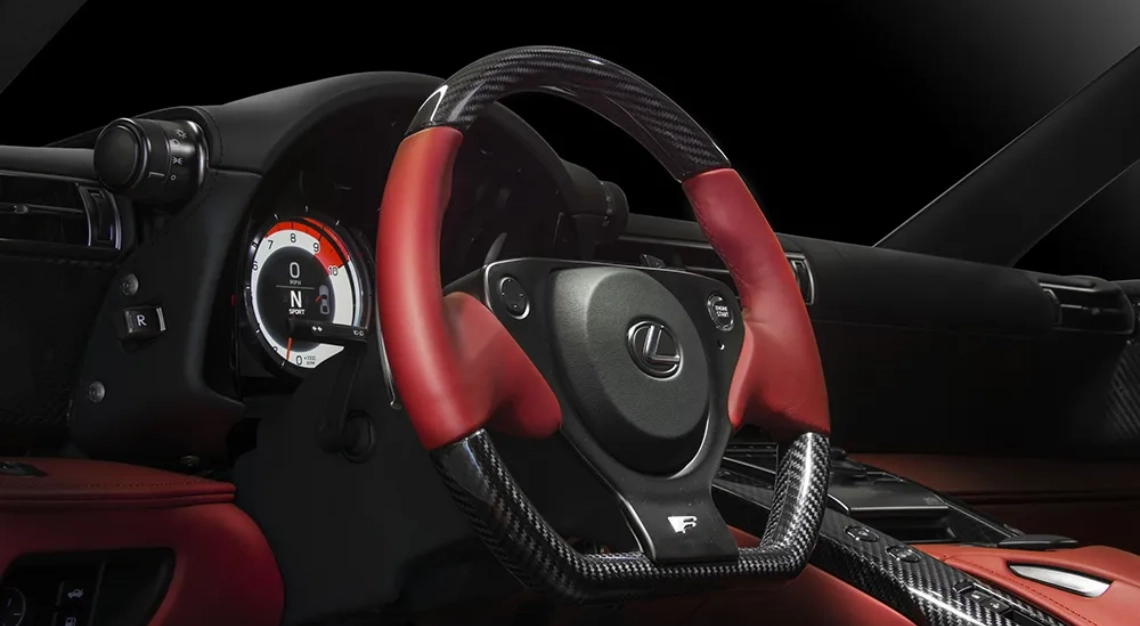
Why it was only in production for two years
Lexus built just 500 examples of the LFA—436 “regular” models and 64 Nurburgring Package variants—between 2010 and 2012, 190 of which were for the US market. The decision to keep the production run so low appears to have been intentional. The company was selective about choosing the LFA’s buyers, opening up pre-orders in 2009, but only deciding who’d be a lucky recipient in 2010. The car was initially also going to be sold via a two-year lease program, to stop owners from quickly flipping it for profit, but the marque decided instead to offer it to a select group of buyers. Lexus only hand-built 20 examples per month, with each coming with a numbered plaque signed by the specialist who’d assembled the vehicle.
Still, it’s easy to wonder how much demand there really was for the car in its early years. Although production of the supercar finished in 2012, the supercar lingered on lots until the end of the decade. At least 43 brand-new LFAs were sold in North America after 2013, with three of those sales coming in 2020. It’s unclear how much dealers were charging for those last zombie LFAs, but it’s safe to say that few would’ve predicted the car would command double its retail value a decade later.
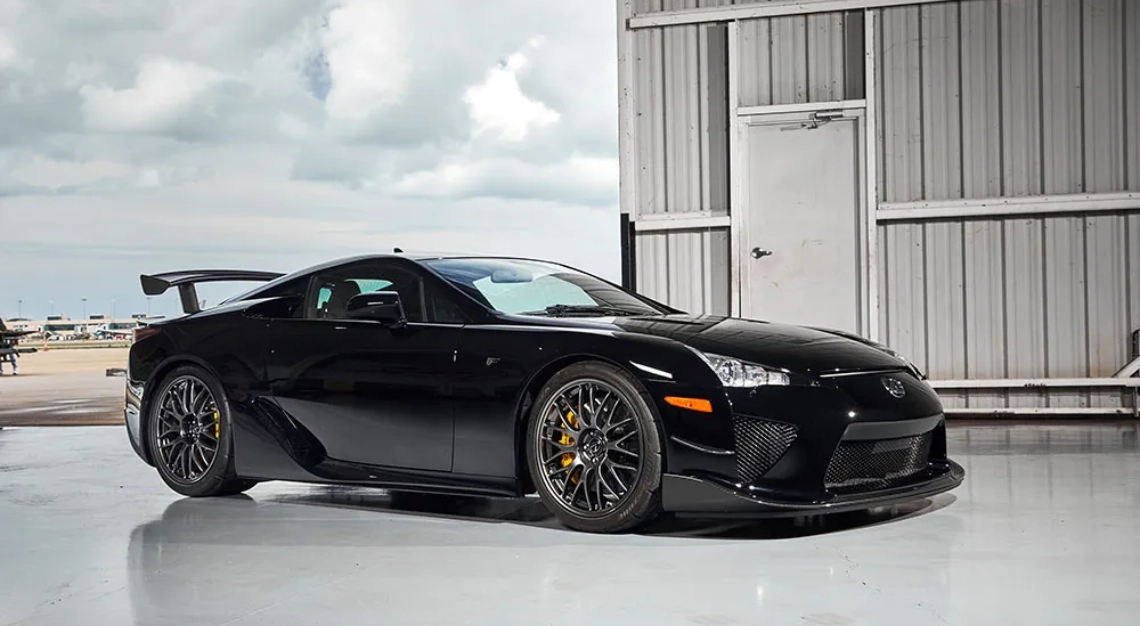
Reviews for the LFA were strong upon its release, but when you look at the publicly available sales numbers, it’s easy to wonder if the vehicle was ahead of its time. Regardless, it would seem that car lovers have finally caught up.
Could the LFA make a comeback?
December 14 of this year will mark the 12th anniversary of the final LFA—a white Nurburgring Package example—rolling off the line. In the time since production ceased, the marque has not indicated that it would revive the nameplate, even as the reverence for the supercar has grown. That could change in the second half of the decade, though.
In 2022, Lexus shared the first images of an all-electric supercar concept the company has been working on in secret. The battery-powered speed machine had no name, but multiple outlets reported that it was being viewed internally as a spiritual successor of sorts to the LFA. There were even rumours that the EV would be able to accelerate from zero to 100 km/h in less than two seconds and travel over 640 kilometres on a single charge. At the time, the word was that the vehicle would arrive in 2025, but there’s been next to no info in the years since.
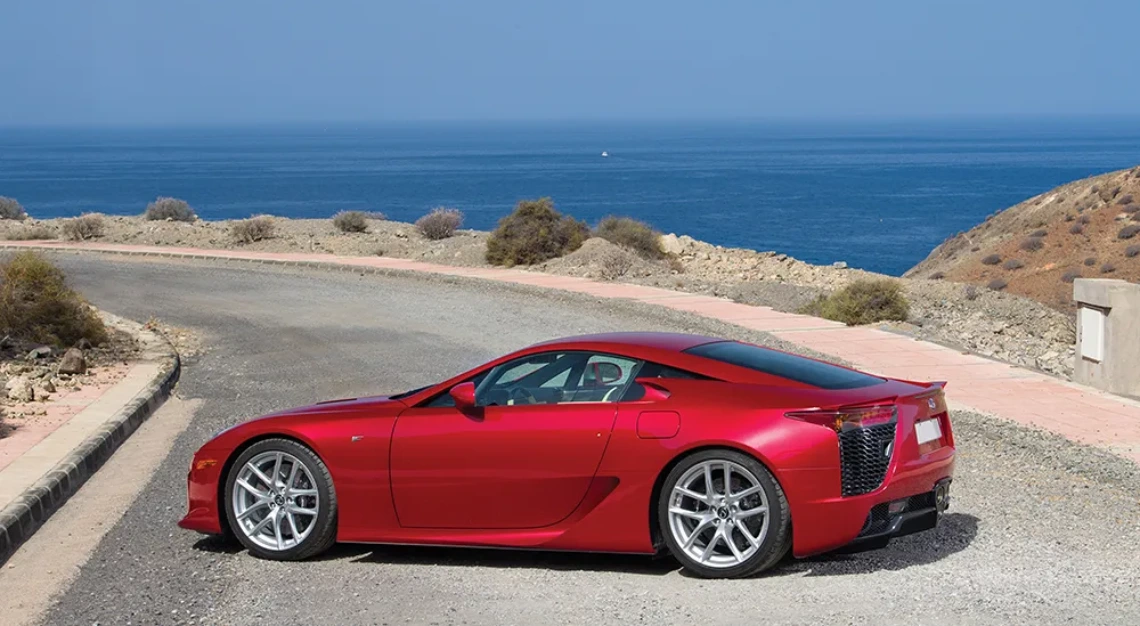
That might be because Toyota’s attention may be focused on another car that has since been referred to as the LFA’s spiritual successor in the press. That car is a potential production Lexus model said to be inspired by the Toyota GR GT3 concept. This time around there’s more info to chew on, including reporting that the car will feature a twin-turbo V-8 that produces 600 hp and possibly weigh even less than the LFA. The car is being built to satisfy FIA homologation rules and could arrive as soon as 2026.
Only time will tell if either of these cars goes into production and if they do whether they meet the lofty standards set by the LFA. Regardless, it’s good to know the marque remains as entranced by the LFA as the rest of us.
How much does the LFA sell for now?
The base price of the LFA was about US$375,000 but with loads of options that could easily push the price closer to US$400,000. The performance-oriented variant with the Nürburgring Package was even more expensive, coming in at US$445,000, making it one of the most expensive Japanese road vehicles ever built.
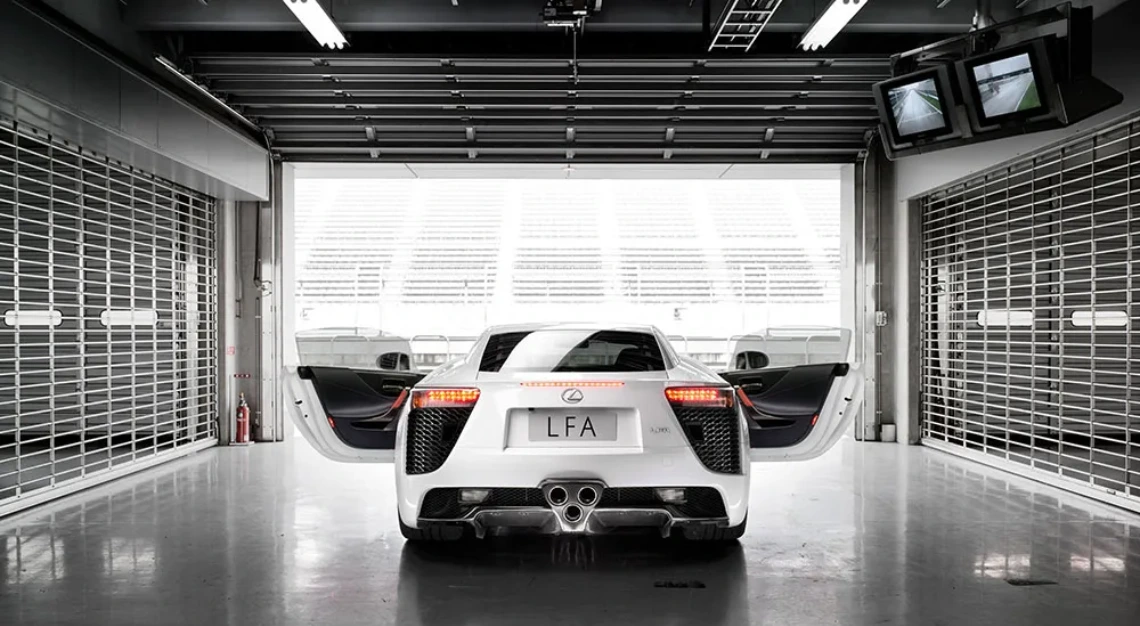
Prices—as often happens when a car is rare and revered—have climbed significantly in the decade since production of the supercar ceased. It’s actually hard to believe someone was able to buy Hilton’s LFA, which had just 6421 kilometres on it at the time of sale, for only US$75,000 more than MSRP as recently as 2020. Pricing for the supercar has grown exponentially in the nearly half-decade since. Hagerty now puts a “good condition” base LFA’s value at US$679,000. The Nürburgring Package variant, meanwhile, sells for even more, with an example with just 3218 kilometres once going for an astounding US$1.625 million. With only 500 LFAs in existence, if you see one for lower than either of those prices, you might want to grab it quickly.
This story was first published on Robb Report USA
